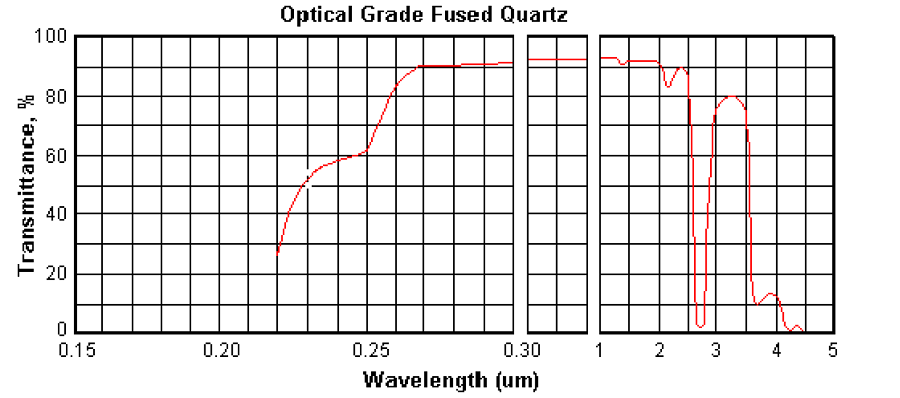Bena Optics offers finely annealed Fused quartz
mirror blank.This material has a low coefficient of expansion and is one of the excellent extreme ultraviolet materials. Its excellent cost performance is widely used in astronomical telescopes.
The physical properties of Fused quartz include the following aspects:
Transparency and Spectral Range: Fused quartz optical glass exhibits good transparency in the visible and near-infrared spectral ranges, making it suitable for the manufacture of optical components. Its application wavelength range is 200-2500nm, with a strong absorption band in the 2600-2800nm range.
Dispersion Characteristics: Fused quartz has low dispersion characteristics, which means it can reduce chromatic aberration in optical systems, ensuring image clarity and accuracy.
Chemical Stability: Fused quartz possesses excellent chemical stability, allowing it to resist contact with various chemicals, making it suitable for diverse environments.
Thermal Stability: Fused quartz has good thermal stability within a certain range, making it suitable for high-temperature environments.
Other Characteristics: Fused quartz may contain small bubbles and metallic impurities, and it has a striated and granular structure.
| Coefficient of thermal expansion | 5.5x10-7cm/cm.°C (20°C-320°C) |
| Thermal conductivity | 1.4 W/m.°C |
| Specific heat | 670 J/kg.°C |
| Softening point | 1683°C |
| Annealing point | 1215°C |
| Strain point | 1120°C |
| Density | 2.21×103kg/m³ |
| Hardness | 580KHN100 |
| Tensile hardness | 4.9×107Pa(N/㎡) |
| Compressive hardness | >1.1×109Pa |
| nF'-nC' | 0.006797 |
| Stress coefficient | 35.0 nm/cm MPa |
| Ve | 67.6 |
| Vd | 67.8 |

| Range of dimension | 100mm - 2000mm diameter | |
| Range of thickness | 5 mm~300 mm | |
| Radius processing | Upon customer's request | |
| Center hole | Upon customer's request | |
| Measurement / | Dimension | Vernier caliper |
| tolerance | Radius | Coordinate Measuring Machine (CMM) |
| Flatness | Dial indicator | |
| Circularity and Concentricity | Dial indicator | |
When manufacturing lenses for astronomical telescopes, using fused silica ensures that the lenses maintain excellent optical performance across different environmental temperatures, such as from the cold of high-altitude observatories to the heat of desert observatories. This stability prevents deformation due to thermal expansion and contraction, thereby ensuring the accuracy of observations. Additionally, fused silica is widely used in other high-precision optical instruments, such as microscope lenses.
